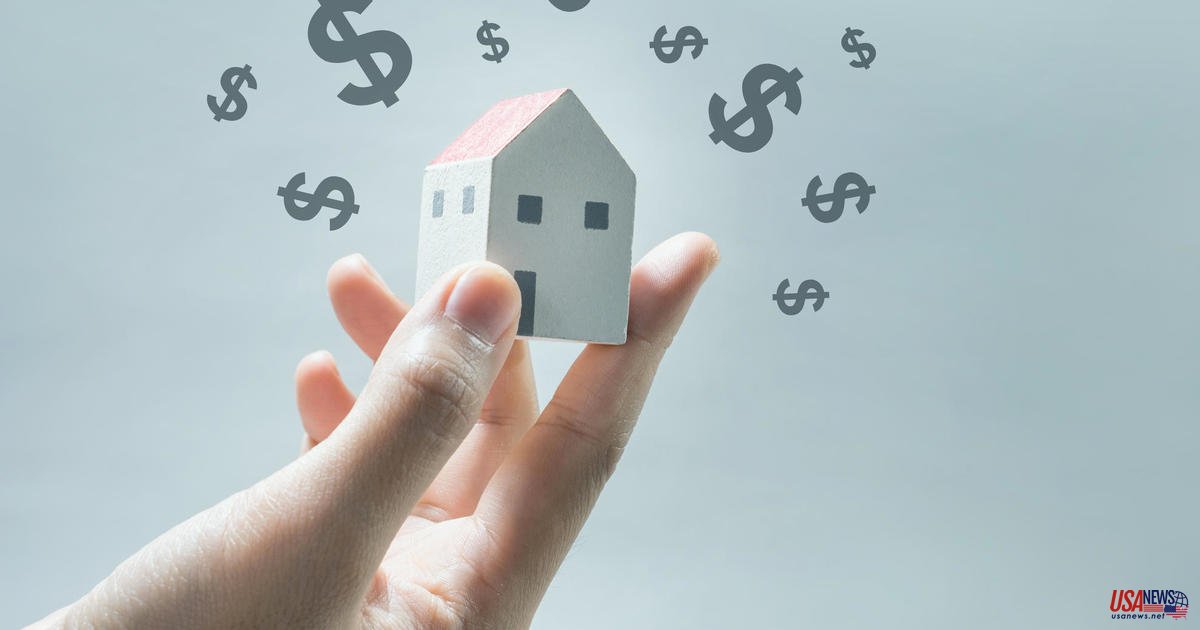Many Americans are finding it more difficult to buy affordable homes this spring due to higher mortgage rates.
Buyers in metro areas like Denver are racing to close deals before mortgage rates rise. Some are choosing to commute longer distances in Dallas to be able to afford homes. Sellers often receive multiple offers in Los Angeles, which has a sharp decline in the number of homes available for sale compared to a year ago.
Although still very low, long-term mortgage rates are steadily rising this year. Last week, the average weekly rate for a 30-year fixed-rate mortgage was 4.42 percent. It was 3.95 % at the beginning of this year.
Just a half-point can increase monthly payments or add thousands of dollars in interest over the 30-year term. This could cause some buyers to be turned down by those who earn the median income in Los Angeles and Seattle.
Because starter homes are subject to the highest price increases and the sharpest declines in number of available homes, first-time buyers face major hurdles to homeownership. Buyers are limited by the mortgage rates.
Low inventory, rising prices, and higher mortgage rates are expected to impact the U.S. housing markets this year. Many economists and housing experts predict that U.S. home sales will remain flat or slightly higher than 2017.
Danielle Hale (chief economist at Realtor.com) stated that while inventory has been declining for several years, we have not stopped talking about it. This puts us in a position for home buyers this spring that will be the most competitive we've seen in the past few years.
Chad Zolman experienced that when he was looking for a Denver home. Since September began, the account manager received 11 offers but was outbid by rivals who offered more money. Zolman became more anxious about his ability to purchase a home as mortgage rates rose.
Zolman, 41, said that "the rates kept going higher, and the more they kept going up the more you could buy a house." It's not good to buy less houses in this market. You must be able and willing to spend the money.
Zolman finally bought a three-bedroom, newly constructed townhome for $370,000. A 30-year fixed rate loan was approved to Zolman at a mere 4.7 percent. However, he is not yet in the clear. He cannot lock in his rate before mid-May within the 120-day window prior to construction of the house.
What happens if the rates rise?
Zolman stated, "It's what it is." "You only have to be willing to pay it."
Others find it harder to bridge the gap between their incomes and home prices due to rising mortgage rates. In March, the 30-year rate was 4.46 percent. For millennials, especially those looking to buy their first home, cities like Seattle, Los Angeles and Miami have become more expensive.
The national median home value is $225,264. This is 3.8 times the U.S. median household income of $59,000. According to the U.S. Census most recent annual income figures and home price data from Attom Data Solutions, this figure represents 3.8 times. In 2000, the same price-to income ratio was 3.3.
For a buyer earning the median Pittsburgh wage, a $125,000 home is approximately 2.2 times the city's median income of $56,063. This makes it easier to afford a home. This is true for buyers in St. Louis and Oklahoma City, Indianapolis, Baltimore, and other cities with a median home price less than three times that of the median income.
The home price-to income gap is a stark contrast in California, such as Los Angeles. A median home priced at $605,000 is nine times more than the median income of $65,950. The home price-income gap has widened to five times in Seattle, Denver and Portland, Oregon.
Nick Bailey, Century 21 Real Estate CEO, stated that "If you look at the coasts -- Seattle San Francisco, New York and other places in the Northeast," there are a lot first-time homebuyers priced out of this market. "There is a point where the average first-time homebuyer can't compete."
Rising mortgage rates are responsible for around a third of an increase in the average homebuyer's monthly payments, while home prices have risen about two-thirds.
Hale stated that rising prices had been an important factor in the rise of prices. "The reason prices are rising" is the balance between supply-demand: There's a lot of demand and not enough inventory.
From 1.59 million a year ago, the supply of homes for purchase fell 8.1% in February. At the current sales rate, it would take 3.4 months to buy all the homes available. This is down from 6 months on average since 2000.
Redfin's chief economist Nela Richardson said that "Last Year was the fastest housing market in terms of days on the market" She added that homes are selling five days faster now than they did last year.
Current homeowners who have had historically low mortgage rates in recent years might be reluctant to sell, especially if they are required to take on a higher rate of mortgage for their next home. This could reduce the number of homes available for sale across the country. Even though rates aren't expected to change much, buyers can still expect prices and other factors to continue climbing this year. This will allow buyers to outnumber the homes for sale.
Many Americans feel that the right time to purchase a home is now because of the strong job market. The largest generation since the baby boomers is the millennials. This spring, they will be the biggest buyers.
Cheryl Young, Trulia's senior economist, stated that "the inventory crunch" is real and it is very acute for first-time buyers. It's a sellers market.
This year's home sales have been inconsistent. According to the National Association of Realtors, existing home sales increased by 3 percent to 5.54 million annually, a seasonally adjusted rate. This gain came after sales declines in December and January.
In general, home prices have risen 6.3 percent from their peak in July 2006. The housing bubble burst in July 2006, and prices plummeted to their lowest point in February 2012. Prices have recovered 46.5 percent since then.
Rob Chilton and his wife, first-time home buyers, have expanded their search areas to help them cope with the rising Dallas prices.
In February, the couple bought a three-bedroom, 2-bath fixer-upper, which was $335,000 less than they paid for in order to save money for a down-payment. This is $15,000 less than the asking price but $45,000 more that what the couple could afford.
Chilton, a music teacher, stated that "Houses that were comfortably within our price range three to four years ago are now beyond our price range."
Chilton's house is located in a suburb, which adds 15 minutes to Chilton’s wife's commute to work. This is on top of the one-hour drive she used before.
Chilton, 33, said that by moving further North, he could find a better home in our price range and a newer house in a better condition.
It's not unusual for sellers in Dallas to get multiple offers beyond their asking price. James Williams, broker associate with Berkshire Hathaway HomeServices PenFed Realty, stated that a home recently listed for $215,000 attracted many buyers.
Williams stated that there were 40 showings and 10 offers in the first weekend. The highest offer was $15,000 (or 7 percent over the list price). There is a shortage inventory below $300,000. When those homes come on the market, it's frenzy.













